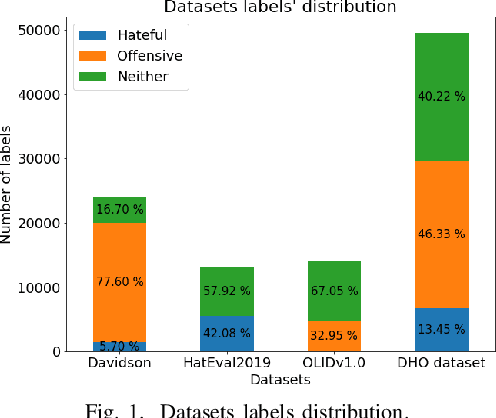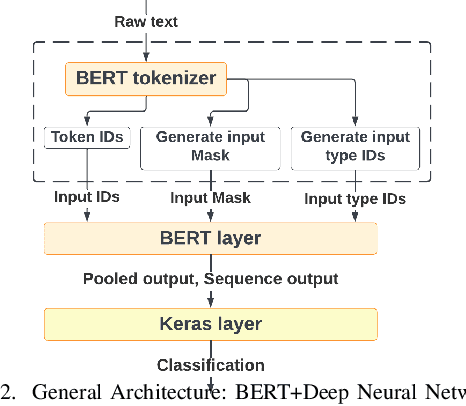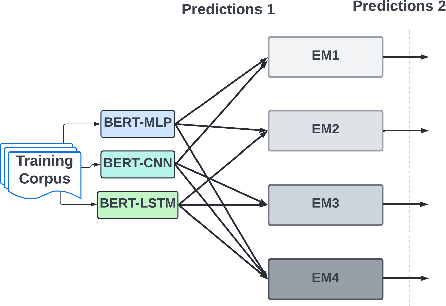Reza Farahbakhsh
Redefining Toxicity: An Objective and Context-Aware Approach for Stress-Level-Based Detection
Mar 20, 2025

Abstract:The fundamental problem of toxicity detection lies in the fact that the term "toxicity" is ill-defined. Such uncertainty causes researchers to rely on subjective and vague data during model training, which leads to non-robust and inaccurate results, following the 'garbage in - garbage out' paradigm. This study introduces a novel, objective, and context-aware framework for toxicity detection, leveraging stress levels as a key determinant of toxicity. We propose new definition, metric and training approach as a parts of our framework and demonstrate it's effectiveness using a dataset we collected.
The TIP of the Iceberg: Revealing a Hidden Class of Task-In-Prompt Adversarial Attacks on LLMs
Jan 27, 2025Abstract:We present a novel class of jailbreak adversarial attacks on LLMs, termed Task-in-Prompt (TIP) attacks. Our approach embeds sequence-to-sequence tasks (e.g., cipher decoding, riddles, code execution) into the model's prompt to indirectly generate prohibited inputs. To systematically assess the effectiveness of these attacks, we introduce the PHRYGE benchmark. We demonstrate that our techniques successfully circumvent safeguards in six state-of-the-art language models, including GPT-4o and LLaMA 3.2. Our findings highlight critical weaknesses in current LLM safety alignments and underscore the urgent need for more sophisticated defence strategies. Warning: this paper contains examples of unethical inquiries used solely for research purposes.
Towards Cross-Lingual Audio Abuse Detection in Low-Resource Settings with Few-Shot Learning
Dec 03, 2024Abstract:Online abusive content detection, particularly in low-resource settings and within the audio modality, remains underexplored. We investigate the potential of pre-trained audio representations for detecting abusive language in low-resource languages, in this case, in Indian languages using Few Shot Learning (FSL). Leveraging powerful representations from models such as Wav2Vec and Whisper, we explore cross-lingual abuse detection using the ADIMA dataset with FSL. Our approach integrates these representations within the Model-Agnostic Meta-Learning (MAML) framework to classify abusive language in 10 languages. We experiment with various shot sizes (50-200) evaluating the impact of limited data on performance. Additionally, a feature visualization study was conducted to better understand model behaviour. This study highlights the generalization ability of pre-trained models in low-resource scenarios and offers valuable insights into detecting abusive language in multilingual contexts.
Read Over the Lines: Attacking LLMs and Toxicity Detection Systems with ASCII Art to Mask Profanity
Sep 27, 2024Abstract:We introduce a novel family of adversarial attacks that exploit the inability of language models to interpret ASCII art. To evaluate these attacks, we propose the ToxASCII benchmark and develop two custom ASCII art fonts: one leveraging special tokens and another using text-filled letter shapes. Our attacks achieve a perfect 1.0 Attack Success Rate across ten models, including OpenAI's o1-preview and LLaMA 3.1. Warning: this paper contains examples of toxic language used for research purposes.
Adversarial Botometer: Adversarial Analysis for Social Bot Detection
May 03, 2024



Abstract:Social bots play a significant role in many online social networks (OSN) as they imitate human behavior. This fact raises difficult questions about their capabilities and potential risks. Given the recent advances in Generative AI (GenAI), social bots are capable of producing highly realistic and complex content that mimics human creativity. As the malicious social bots emerge to deceive people with their unrealistic content, identifying them and distinguishing the content they produce has become an actual challenge for numerous social platforms. Several approaches to this problem have already been proposed in the literature, but the proposed solutions have not been widely evaluated. To address this issue, we evaluate the behavior of a text-based bot detector in a competitive environment where some scenarios are proposed: \textit{First}, the tug-of-war between a bot and a bot detector is examined. It is interesting to analyze which party is more likely to prevail and which circumstances influence these expectations. In this regard, we model the problem as a synthetic adversarial game in which a conversational bot and a bot detector are engaged in strategic online interactions. \textit{Second}, the bot detection model is evaluated under attack examples generated by a social bot; to this end, we poison the dataset with attack examples and evaluate the model performance under this condition. \textit{Finally}, to investigate the impact of the dataset, a cross-domain analysis is performed. Through our comprehensive evaluation of different categories of social bots using two benchmark datasets, we were able to demonstrate some achivement that could be utilized in future works.
No offence, Bert -- I insult only humans! Multiple addressees sentence-level attack on toxicity detection neural network
Oct 19, 2023Abstract:We introduce a simple yet efficient sentence-level attack on black-box toxicity detector models. By adding several positive words or sentences to the end of a hateful message, we are able to change the prediction of a neural network and pass the toxicity detection system check. This approach is shown to be working on seven languages from three different language families. We also describe the defence mechanism against the aforementioned attack and discuss its limitations.
On the definition of toxicity in NLP
Oct 05, 2023Abstract:The fundamental problem in toxicity detection task lies in the fact that the toxicity is ill-defined. This causes us to rely on subjective and vague data in models' training, which results in non-robust and non-accurate results: garbage in - garbage out. This work suggests a new, stress-level-based definition of toxicity designed to be objective and context-aware. On par with it, we also describe possible ways of applying this new definition to dataset creation and model training.
Hate Speech and Offensive Language Detection using an Emotion-aware Shared Encoder
Feb 17, 2023Abstract:The rise of emergence of social media platforms has fundamentally altered how people communicate, and among the results of these developments is an increase in online use of abusive content. Therefore, automatically detecting this content is essential for banning inappropriate information, and reducing toxicity and violence on social media platforms. The existing works on hate speech and offensive language detection produce promising results based on pre-trained transformer models, however, they considered only the analysis of abusive content features generated through annotated datasets. This paper addresses a multi-task joint learning approach which combines external emotional features extracted from another corpora in dealing with the imbalanced and scarcity of labeled datasets. Our analysis are using two well-known Transformer-based models, BERT and mBERT, where the later is used to address abusive content detection in multi-lingual scenarios. Our model jointly learns abusive content detection with emotional features by sharing representations through transformers' shared encoder. This approach increases data efficiency, reduce overfitting via shared representations, and ensure fast learning by leveraging auxiliary information. Our findings demonstrate that emotional knowledge helps to more reliably identify hate speech and offensive language across datasets. Our hate speech detection Multi-task model exhibited 3% performance improvement over baseline models, but the performance of multi-task models were not significant for offensive language detection task. More interestingly, in both tasks, multi-task models exhibits less false positive errors compared to single task scenario.
BERT-based Ensemble Approaches for Hate Speech Detection
Sep 15, 2022



Abstract:With the freedom of communication provided in online social media, hate speech has increasingly generated. This leads to cyber conflicts affecting social life at the individual and national levels. As a result, hateful content classification is becoming increasingly demanded for filtering hate content before being sent to the social networks. This paper focuses on classifying hate speech in social media using multiple deep models that are implemented by integrating recent transformer-based language models such as BERT, and neural networks. To improve the classification performances, we evaluated with several ensemble techniques, including soft voting, maximum value, hard voting and stacking. We used three publicly available Twitter datasets (Davidson, HatEval2019, OLID) that are generated to identify offensive languages. We fused all these datasets to generate a single dataset (DHO dataset), which is more balanced across different labels, to perform multi-label classification. Our experiments have been held on Davidson dataset and the DHO corpora. The later gave the best overall results, especially F1 macro score, even it required more resources (time execution and memory). The experiments have shown good results especially the ensemble models, where stacking gave F1 score of 97% on Davidson dataset and aggregating ensembles 77% on the DHO dataset.
Hate Speech Detection and Racial Bias Mitigation in Social Media based on BERT model
Aug 28, 2020



Abstract:Disparate biases associated with datasets and trained classifiers in hateful and abusive content identification tasks have raised many concerns recently. Although the problem of biased datasets on abusive language detection has been addressed more frequently, biases arising from trained classifiers have not yet been a matter of concern. Here, we first introduce a transfer learning approach for hate speech detection based on an existing pre-trained language model called BERT and evaluate the proposed model on two publicly available datasets annotated for racism, sexism, hate or offensive content on Twitter. Next, we introduce a bias alleviation mechanism in hate speech detection task to mitigate the effect of bias in training set during the fine-tuning of our pre-trained BERT-based model. Toward that end, we use an existing regularization method to reweight input samples, thereby decreasing the effects of high correlated training set' s n-grams with class labels, and then fine-tune our pre-trained BERT-based model with the new re-weighted samples. To evaluate our bias alleviation mechanism, we employ a cross-domain approach in which we use the trained classifiers on the aforementioned datasets to predict the labels of two new datasets from Twitter, AAE-aligned and White-aligned groups, which indicate tweets written in African-American English (AAE) and Standard American English (SAE) respectively. The results show the existence of systematic racial bias in trained classifiers as they tend to assign tweets written in AAE from AAE-aligned group to negative classes such as racism, sexism, hate, and offensive more often than tweets written in SAE from White-aligned. However, the racial bias in our classifiers reduces significantly after our bias alleviation mechanism is incorporated. This work could institute the first step towards debiasing hate speech and abusive language detection systems.
 Add to Chrome
Add to Chrome Add to Firefox
Add to Firefox Add to Edge
Add to Edge